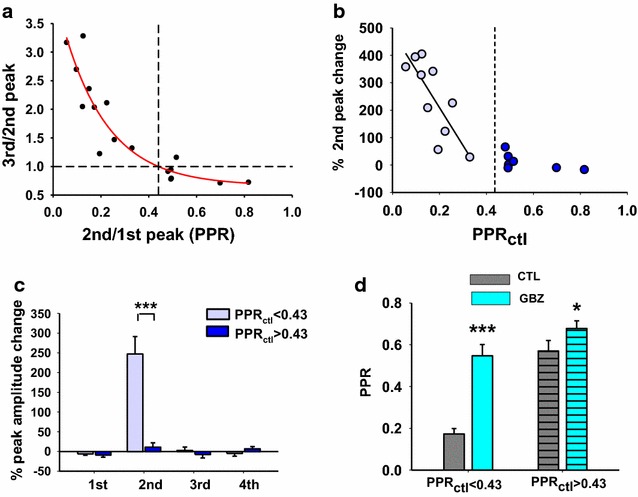Fig. 3.

Synapses exhibiting different patterns of synaptic depression have different sensitivity to gabazine. a Plotting of third/second peak ratios, determined from the 17 cells shown in Fig. 2, as function of the PPR (second/first peak ratio). The single exponential function best fitting the data (y = y0 + a * exp(−b * x)) is represented by the solid line (r = 0.92; rsqr = 0.86; y = 1 for x = 0.43). b, c Effects of gabazine on the second eEPSC peak b and on all peaks c, as a function of PPRctl. b The second peak percentage change is strongly correlated with PPR when this is less than 0.43 (Pearson correlation test, p = 0.005, n = 10). c Only the second peak percentage change exhibits a significant difference between synapses with PPR <0.43 and PPR >0.43 (unpaired t test, p < 0.001, n = 10 and 7, respectively). d Mean values of PPR in control and gabazine, plotted for the two populations of synapses. Both sets of synapses exhibit a significant increase of PPR in gabazine, although those with PPR <0.43 reach a higher level of significance (PPR <0.43: paired t test, p < 0.001, n = 10; PPR >0.43: paired t test, p = 0.037, n = 7)
